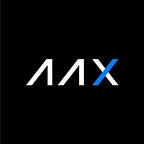DeFi in 2020: Tomorrow’s Finance will not be centralized — AAX Academy
DeFi which stands for decentralized finance is the catch-all term for financial products and services built using open-source blockchains. Most decentralized applications (dApps) run on the Ethereum blockchain, and this open finance ecosystem is accessible to anyone with an internet connection.
During the past year, DeFi has seen huge gains in every sense of the word. The amount of ETH locked in DeFi is an indication of user engagement, and currently stands at the all-time high of 3.1 million ETH worth 1.7 billion USD. The majority of DeFi assets have only been created this year but some of those tokens have booked double-digit growth. That’s because DeFi has a unique appeal that its sibling Fintech can’t rival.
What makes DeFi different from Fintech
While Fintech has certainly played a huge role in modernizing financial services, it hasn’t really lived up to its mission of making finance more accessible to more people. That’s because most applications are basically reimagined user interfaces that don’t address deeper structural shortcomings. Apps like eToro, TransferWise and PayPal have made it easier to trade, transfer and pay — but these services are not equally accessible for everyone. For example, PayPal is not available in Bangladesh, Gabon, Lebanon, Monaco, Montenegro, Nigeria, Myanmar and Zimbabwe to name a few. Also if you don’t have a bank account — which applies to 2 billion people — it may be difficult to cash out.
Fintech has created financial tools that are much easier to use, but it has not disrupted the supply and distribution of money to the degree of what would constitute a financial revolution. Crypto in general and DeFi specifically are both part of a full-blown financial revolution that invites everyone across the globe to take part.
The way DeFi is built decreases the distribution cost of financial instruments and removes barriers to entry for all types of financial services. Anyone can now create new money or a radically new financial services like streaming payments at negligible costs. Users anywhere in the world have no problem accessing these dApps. All they need is an Ethereum wallet.
Powered by the Ethereum blockchain, DeFi is programmable and smart contracts remove the need for third parties to facilitate interactions. That makes transactions fast, cost-efficient and safe. Because it is permissionless, everyone can create and participate in DeFi applications. A small team without funding can achieve a lot, illustrated by the 2 person team that built DEX aggregator 1inch.exchange in 2019 which has already processed more than $500 million.
DeFi has shown great promise in 2020
Many DeFi assets have been going strong in 2020, with some even outperforming Bitcoin like asset trading platform Synthetix surging 200% and lending platform Aave gaining 130%. Decentralized exchange tokens also did well with Bancor, Kyber and Loopring gaining 106%, 101% and 26% respectively.
One of the drivers behind the increase in DeFi engagement is the oncoming Ethereum 2.0 upgrade, or Ethereum Serenity. The Ethereum upgrade is set to roll out in the summer of 2020 and will address scalability, security and efficiency issues in a series of updates. While there won’t be an immediate impact on the DeFi network with the first update, the first release of Ethereum 2.0 staking may be enough for people to feel bullish on Ethereum and its associated DeFi ecosystem.
The future of DeFi looks bright
Growing adoption rates is already a great sign for DeFi, and if the trend continues it is more than likely that DeFi will take on a more prominent position in the crypto space and eventually start stealing more attention from Fintech.
Besides the increased capabilities that the Ethereum upgrade will bring, there is another feature of DeFi which sets the pace for innovation at an exponential rate. DeFi is interoperable which means different applications can be built on top of each other and customized in new ways. It’s often compared to Lego blocks — each application exists on its own, but several can be combined to create something entirely new. That’s the beauty of an open-source world run by smart contracts — anyone in the world can contribute to innovation and improve the quality of the entire system. There is no telling how far we can go.
Originally published at https://academy.aax.com on July 7, 2020.
